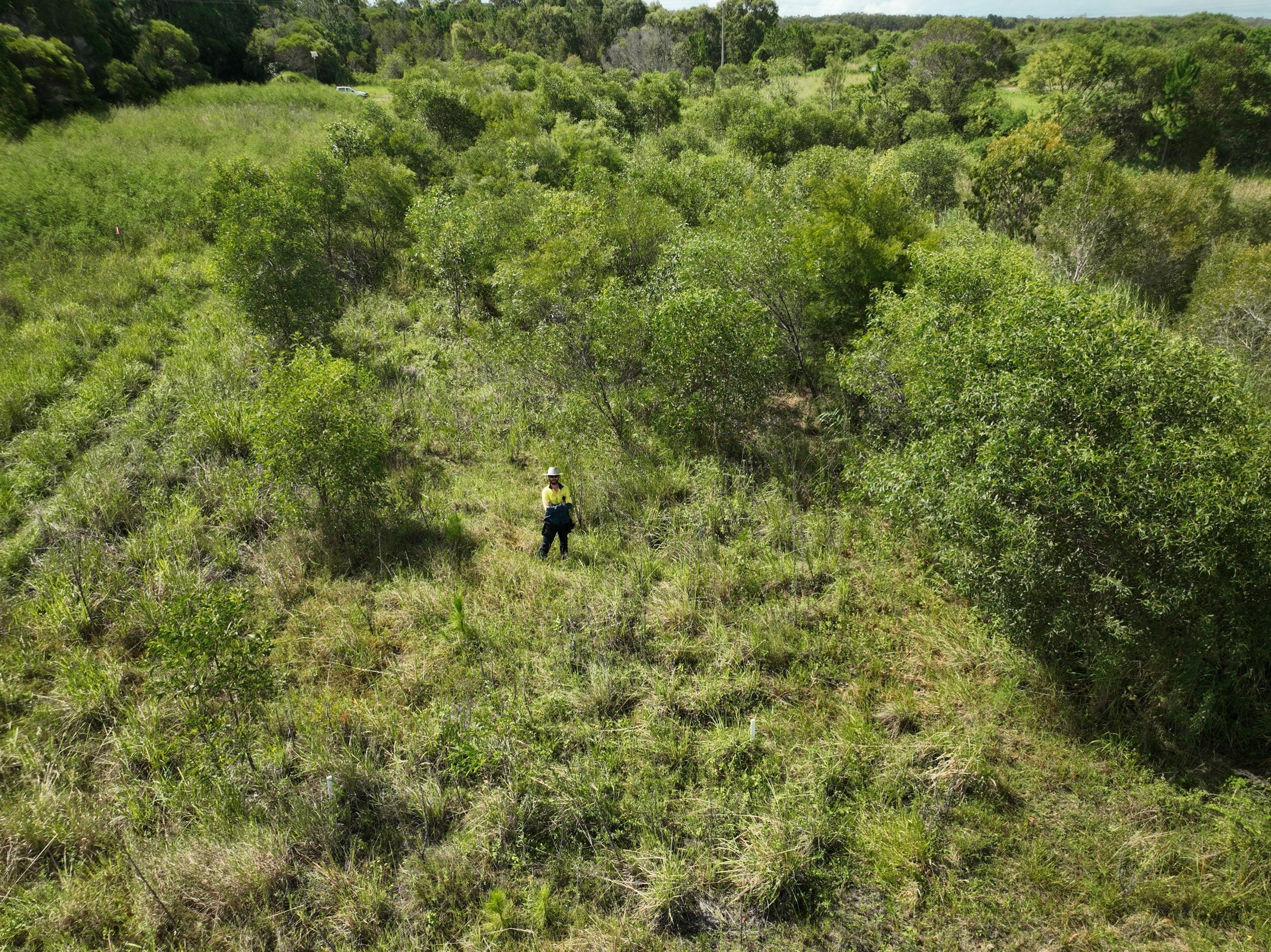Media release
From:
A collaborative research trial has demonstrated that direct seeding offers a scalable and cost-effective alternative to traditional tubestock planting for ecological rehabilitation on sand mines in southeast Queensland.
Tubestock refers to small, young plants grown in narrow, tube-shaped containers, often used for landscaping, revegetation, and gardening projects.
The research trial, a collaboration between Southern Pacific Sands, Healthy Land & Water and Griffith University’s Green Research Infrastructure Labs (GIRLS), evaluated the outcomes of a direct seeding trial at Southern Pacific Sands’ operational site near Bribie Island (a sand mine with differing land-use histories).
It assessed the viability of direct seeding as a rehabilitation technique under the company’s government-approved Progressive Rehabilitation and Closure Plan (PRCP).
In Queensland, a PRCP is a legislated requirement that compels mining operations to progressively rehabilitate disturbed land, identifying post-mining land uses and rehabilitation milestones to ensure long-term environmental compliance.
Researchers applied a diverse native seed mix – comprising grasses, shrubs, and key koala and glossy black cockatoo food tree species – across two sites with contrasting objectives: a pasture site and a novel native ecosystem site.
Outcomes were measured over a 36-month period against the mine’s own PRCP targets, focusing on native tree density, species richness, and weed suppression.
The native ecosystem site significantly exceeded expectations, achieving more than 5,200 stems per hectare – well above the 600 stems/ha PRCP requirement – alongside strong native diversity and canopy cover.
The pasture site showed moderate success, with outcomes influenced by persistent weed pressure and soil conditions.
Lead researcher Christopher Johnson, a PhD candidate at Griffith University and Senior Environmental Officer at Southern Pacific Sands, said the trial reinforced the importance of tailoring techniques to site conditions.
“Direct seeding isn’t a one-size-fits-all solution,” he said.
“But with early weed control, well-considered species selection, and the right preparation, it can deliver better ecological outcomes at a fraction of the cost.”
Healthy Land and Water’s Mark Waud supported this, noting that “making direct seeding work means getting the recipe right”.
The project revealed direct seeding reduced costs by more than 30 per cent compared with tubestock planting – equating to approximately $97,000 per hectare over three years, compared with more than $150,000 over the same period – while also reducing labour and improving scalability.
As one of the first Queensland-based studies to validate direct seeding under operational mining conditions, the trial had already influenced on-site rehabilitation practices.
Dr Ruby Michael, Founder of GIRLS, said it was important to have regional case studies that opened a wider range of options for the return of native ecosystems to sites.
Its success highlighted the value of collaboration between industry, research institutions, and natural resource management groups in developing practical, evidence-based solutions for on-the-ground project delivery.
The study ‘Beyond the Benchmark: Early Indicators of Long-Term Rehabilitation Success Using Direct Seeding’ has been published in Ecological Engineering.



 Australia; QLD
Australia; QLD


